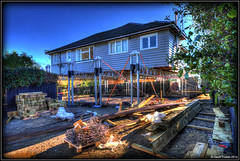
Search
Images for Earthquakes; more images...
Brightening The City
Images, eqnz.chch.2010
None
Brightening The City
Images, eqnz.chch.2010
None
Brightening The City
Images, eqnz.chch.2010
None
Brightening The City
Images, eqnz.chch.2010
None
Brightening The City
Images, eqnz.chch.2010
None
Brightening The City
Images, eqnz.chch.2010
None
Brightening The City
Images, eqnz.chch.2010
None
Brightening The City
Images, eqnz.chch.2010
None
Brightening The City
Images, eqnz.chch.2010
None
Brightening The City
Images, eqnz.chch.2010
None
Brightening The City
Images, eqnz.chch.2010
None
Brightening The City
Images, eqnz.chch.2010
None
Brightening The City
Images, eqnz.chch.2010
None
Brightening The City
Images, eqnz.chch.2010
None
Brightening The City
Images, eqnz.chch.2010
None
Brightening The City
Images, eqnz.chch.2010
None
Brightening The City
Images, eqnz.chch.2010
None
Brightening The City
Images, eqnz.chch.2010
None
Brightening The City
Images, eqnz.chch.2010
None
Brightening The City
Images, eqnz.chch.2010
None
Brightening The City
Images, eqnz.chch.2010
None
Brightening The City
Images, eqnz.chch.2010
None
Brightening The City
Images, eqnz.chch.2010
None
Brightening The City
Images, eqnz.chch.2010
None
Brightening The City
Images, eqnz.chch.2010
None
Brightening The City
Images, eqnz.chch.2010
None
Brightening The City
Images, eqnz.chch.2010
None
Lessons from the 2011 Christchurch earthquake for improving the seismic pe…
Research papers, The University of Auckland Library
The 2011, 6.3 magnitude Christchurch earthquake in New Zealand caused considerable structural damage. It is believed that this event has now resulted in demolition of about 65-70% of the building stock in the Central Business District (CBD), significantly crippling economic activities in the city of Christchurch. A major concern raised from this event was adequacy of the current seismic design practice adopted for reinforced concrete walls due to their poor performance in modern buildings. The relatively short-duration earthquake motion implied that the observed wall damage occurred in a brittle manner despite adopting a ductile design philosophy. This paper presents the lessons learned from the observed wall damage in the context of current state of knowledge in the following areas: concentrating longitudinal reinforcement in wall end regions; determining wall thickness to prevent out-of-plane wall buckling; avoiding lap splices in plastic hinge zones; and quantifying minimum vertical reinforcement. http://www.2eceesistanbul.org/
Mandatory seismic retrofitting : A case study of the land use impacts on a…
Research Papers, Lincoln University
As a result of the Christchurch Earthquake that occurred on 22nd February 2011 and the resultant loss of life and widespread damage, a Royal Commission of Enquiry was convened in April 2011. The Royal Commission recommended a number of significant changes to the regulation of earthquake prone building in New Zealand. Earthquake prone buildings are buildings that are deemed to be of insufficient strength to perform adequately in a moderate earthquake. In response to the Royal Commission recommendations the New Zealand Government carried out a consultative process before announcing proposed changes to the building regulations in August 2013. One of the most significant changes is the imposition of mandatory strengthening requirements for earthquake prone buildings on a national basis. This will have a significant impact on the urban fabric of most New Zealand towns and cities. The type of traditional cost benefit study carried out to date fails to measure these impacts and this paper proposes an alternative methodology based on the analysis of land use data and rating valuations. This methodology was developed and applied to a small provincial town in the form of a case study. The results of this case study and the methodology used are discussed in this paper.
Lucy Daeth is part of the Alright Christchurch organisation.
Audio, Radio New Zealand
New research shows many Cantabrians are still struggling to cope with the after effects of the earthquakes.



